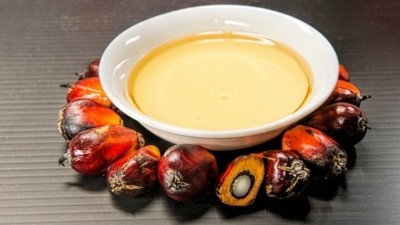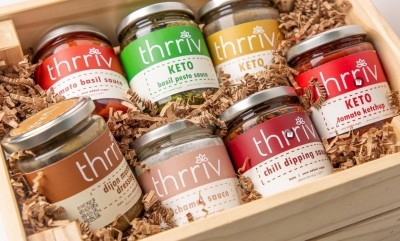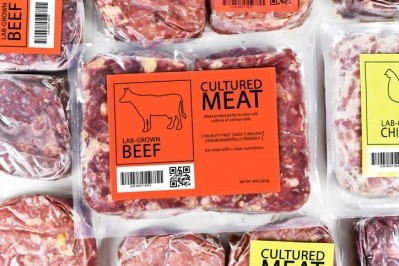Overcoming the humps: How novel packaging and processing tech can make camel meat more palatable

Camel meat is an ethnic food consumed across the arid regions of Middle East and North-East Africa, and could be a potential alternative red meat for human consumption worldwide due to its its nutritional profile.
According to researchers in India and UAE, current methods such as ageing, low-temperature storage, and pre-treatment with antioxidants have been implemented to improve the quality and shelf life of camel meat.
“Very limited research is available about the use of novel pre-treatments, packaging, and processing techniques that can improve the consumer acceptability of camel meat,” they wrote in Journal of Ethnic Foods.
In this review, researchers analysed research articles obtained from online databases such as PubMed, Scopus, and Google Scholar and explored the nutritional composition, as well as various technological interventions such as packaging, pre-treatment, and processing of camel meat.
Camel meat is nutritionally as good as conventional meat sources, and has an edge over beef or lamb due to its low intramuscular fat, low cholesterol content, and high protein and iron content.
Due to its resilient nature to survive in harsh conditions and high carcass yield, camel meat is an appropriate food source especially for developing countries.
Traditionally, camel meat has also been consumed in Chinese and nomadic traditional medicine for its health benefits.
Despite its nutritional and health benefits, camel meat has yet to find an organised market which might be due to limited awareness about nutritional potential as well as scattered information about the methods for improving its overall quality.
“This review will be helpful for researchers and highlight the potential for global acceptance of camel meat as an alternative source of red meat,” researchers said.
Packaging
Currently, common packaging for camel meat is cling wrap.
Very limited literature is available regarding novel packaging methods as an intervention for improving shelf life of camel meat.
Researchers identified vacuum packaging as a viable means for preventing protein degradation, lipid oxidation, and limiting microbial growth.
In addition, they also suggested active packaging, a novel method used in some meats. In other studies, active packaging films based on nanomontmorillonite-chitosan and nanomontmorillonite-carboxymethyl cellulose loaded with different concentrations of Ziziphora clinopodioides essential oil were reported to enhance the overall quality of minced meat samples.
There is also scope for the use of various bio-preservation techniques such as refrigeration, modified atmospheric packaging along with the use of nisin to improve the shelf life of camel meat without any adverse effects on the sensory attributes.
“Studies directed towards the development of appropriate packaging of camel meat is needed for the shelf-life extension which will promote the export of camel meat to the countries where camels are not reared,” researchers said.
Processing
Currently, a variety of processing methods are used for camel meat, one of which is ageing at low temperatures, which enhances the muscles’ tenderness and improves camel meat quality.
Another processing method is low-temperature storage to reduce microbes in meat.
Researchers said fermentation is another promising technique to enhance the nutritional content and shelf life of camel meat. It is a natural process already used in other meat types, using strains such as Lactobacillus sakei, Staphylococcus xylosus, and S. carnosus have been safely used in meat products.
In one study, camel sausages fermented with L. paracasei had improved physicochemical, microbial, and sensory properties. Enhanced flavour, texture, and overall acceptability of the sausages was attributed to various catabolic products generated from carbohydrates, lipids, and proteins by the microbial starter culture, while lactic acid produced by the lactic bacteria was reported to promote the colour.
Preservation
Different pre-treatments have been reported to improve meat quality characteristics and shelf-life by reducing the microbial load, lipid oxidation, and improving colour retention in meats.
Current methods include adding antioxidants and plant extracts to improve sensory properties, and with anti-microbial effect.
Curing is also one of the widely used pre-treatments in meat, especially sausages. It involves adding nitrates and nitrites, to help retain colour, improve taste and retard microbial growth.
“Further research should be directed to implement innovative processing and preservation technologies for development of diverse products with superior consumer acceptance,” researchers said.
Nutritional profile
The review also covered the nutritional quality of camel meat, which varied with age, breed, and type of muscle.
It was found that the meat of younger camels is usually preferred over meat of older animals due to tenderness and colour.
Older camels were also reported to have higher cholesterol content, and fat content in their muscles.
Since camel meat is low in fat and cholesterol, its nutritional profile and health benefits can be utilised as a marketing strategy for enhancing consumer acceptance, especially for health-conscious consumers.
This research was funded by the United Arab Emirates University.
Source: Journal of Ethnic Foods
https://doi.org/10.1186/s42779-021-00089-1
“A review on nutritional composition, health benefits, and technological interventions for improving consumer acceptability of camel meat: an ethnic food of Middle East”
Authors: Waqas N. Baba, et al.


















